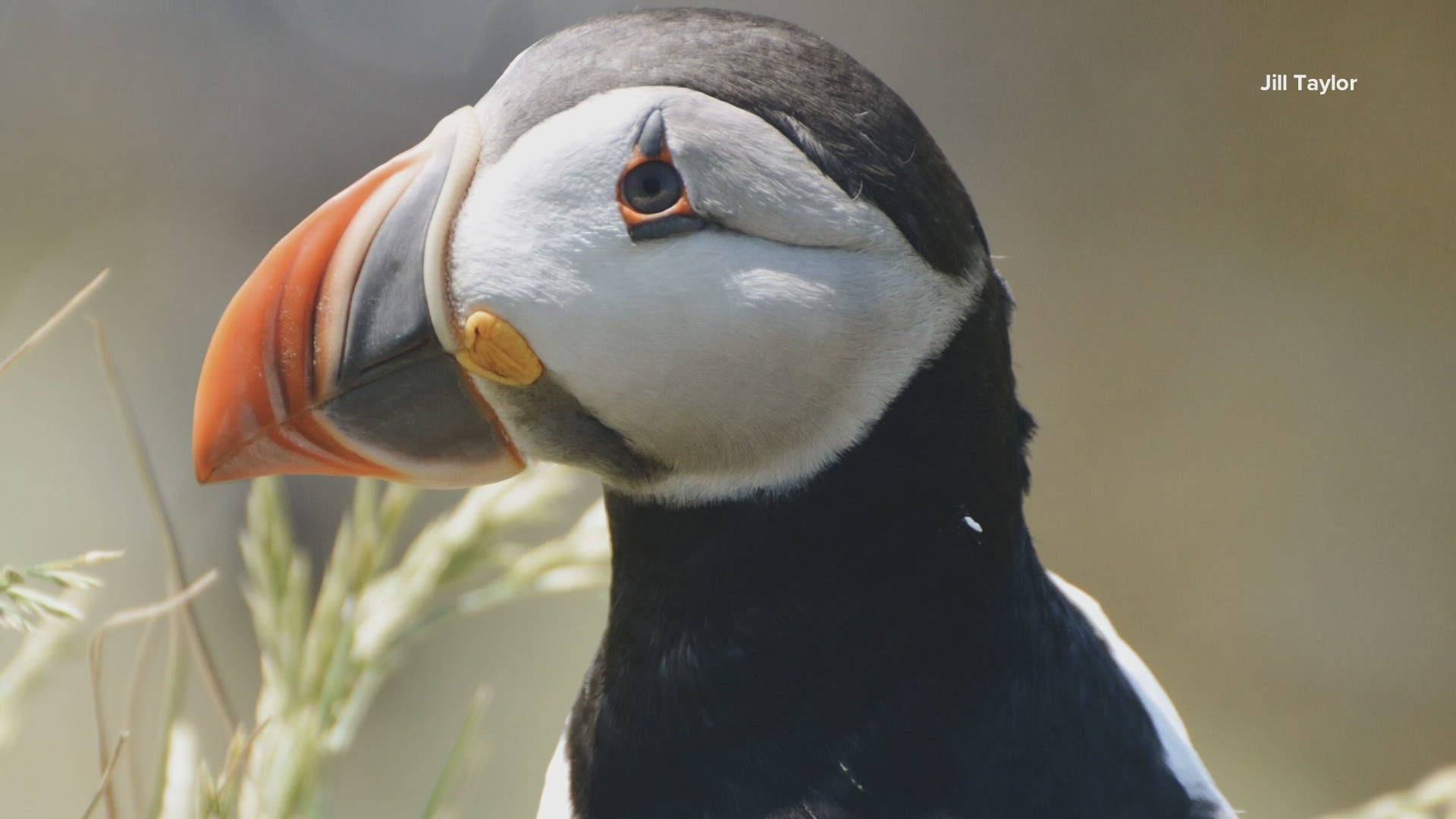NEWFOUNDLAND, Canada — We really only see puffins along the coast when they come to land to mate and raise a puffling, but that's just four months of their life.
This summer we here at NEWS CENTER Maine have been diving deeper into their time on and off the coast through conversations with field researchers who spend their summers studying the seabirds and living among them on islands.
Most recently we spoke with Jill Taylor, who is studying populations off the coast of Newfoundland. We wanted to know: Where do puffins go after the four-month-long mating season?
"They spread out. They've been found in parts of the Mediterranean. They've been found in parts of North Africa," Taylor said. "Their paths are all different, but they do disperse for eight months out of the year, and they're just at sea, basically bobbing around."
Picture it: puffins just floating and feeding in the open ocean for eight months until returning to the same island and the same burrows to breed.
"They're designed for water. They have waterproof feathers. They're excellent divers. I'm sure some of you have seen puffins try to walk on land. Like I said, they're super awkward on land. They're not very good flyers, either," Taylor explained. "They're small birds, but they have a large weight compared to their wingspan, so they're really bad at flying."
"If you've ever seen a puffin try to take off from the water, it's very chaotic and probably the least graceful thing you've ever seen," Taylor continued. "They often need the help of gravity, like falling off a cliff, to help get them started. So, they're very comfortable in the water."
Water can be dangerous and filled with predators that like to eat puffins, but land can be just as dangerous for the seabirds.
"They breed on islands to hopefully avoid land mammals, such as foxes or mink, being able to get to their young. Their young are the most vulnerable to predation events," Taylor explained. "I have seen a great black back gull actually swoop into a burrow, and I guess a puffin chick was hanging too close to the edge, and it actually swooped in and took the puffin right out of the burrow—which is the circle of life, I understand, but it was very sad to watch."
Taylor and her fellow researchers spend so much time with the seabirds that it's hard not to get attached to them.
Since sharing puffin burrow cameras with the rest of the world, Audubon Seabird Institute has garnered even more puffin fans, watching the birds as they care for their egg, then their chick—also called a puffling.
Puffins mate for life, and they care for their chick together, preparing it to take off into the world on its own by the end of July, typically. But what happens when that's over and they fly off to sea? They actually go their separate ways, reuniting only at mating season.
"They spend eight months of the year apart, and then they come back together," Taylor said. "I maintain the only way they mate for life is they spend eight months a year apart from each other."
In fairness, they sort of drop appearances during their time apart. Those orange-and-yellow beaks we know them for are for mating season only.
"They lose those plates. Those fall off and they lose some of their eye ornaments as well, so yeah, they look completely different," Taylor said.
Taylor said she loves talking puffins because she enjoys how people light up when learning about the charismatic bird.
"I think people can relate to them too because they have these really cute family units, where they stick together for long periods of time and come together and show a lot of parental pairing to a chick. It's just fun to be able to watch their natural behavior and their natural habitat," she said.
"They do really awkward things, though. They sometimes land on each other when they're trying to income to their burrow, which just looks very awkward and funny. I've seen them try to surf waves when there's really big waves next to the island, which is fun," Taylor enthused. "And their chicks are absolutely adorable. They are just literally, little balls of fluff, and somehow they turn into this very resilient bird that can stand eight months at sea."
To learn more about the work Jill Taylor is a part of, click here.

